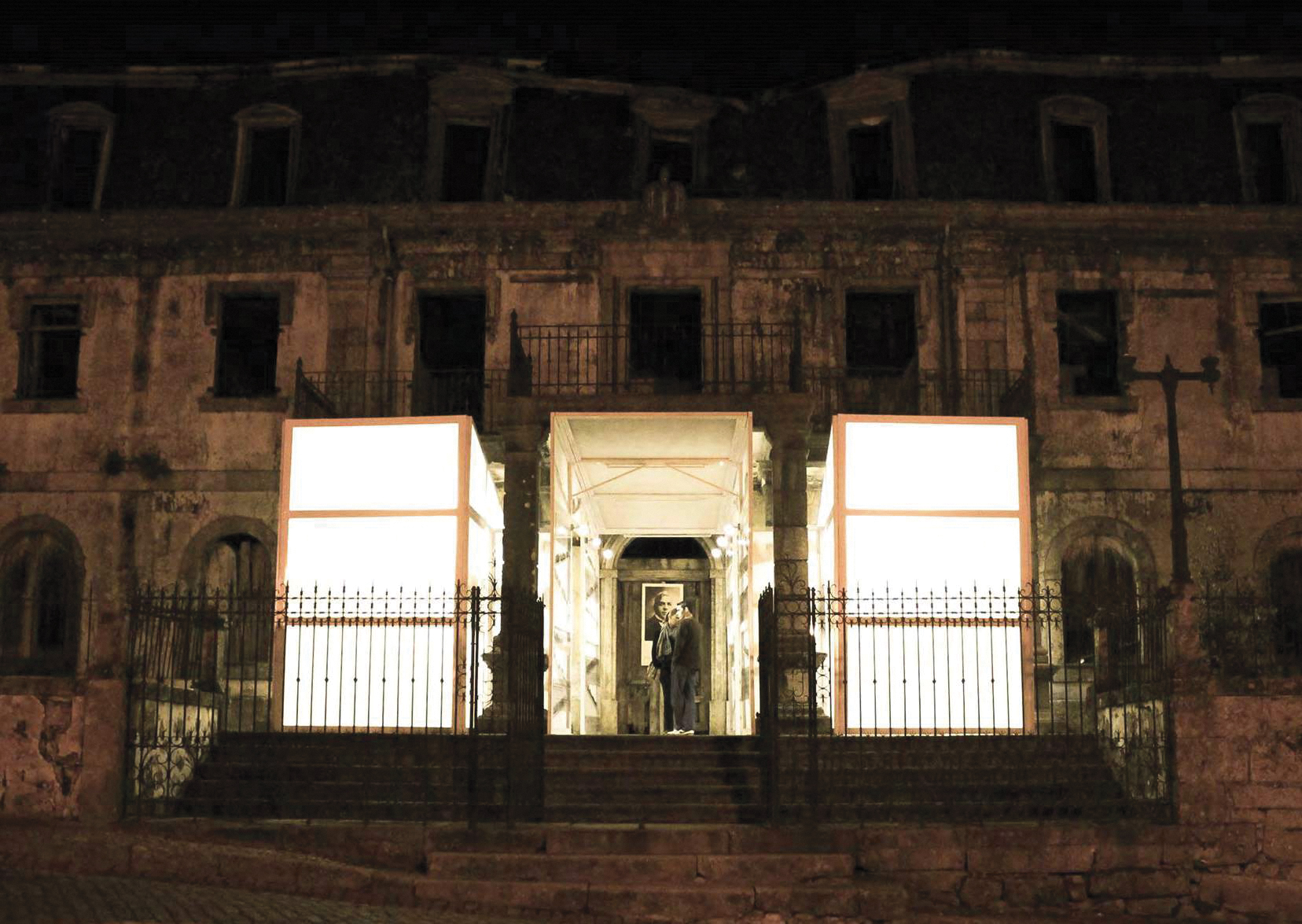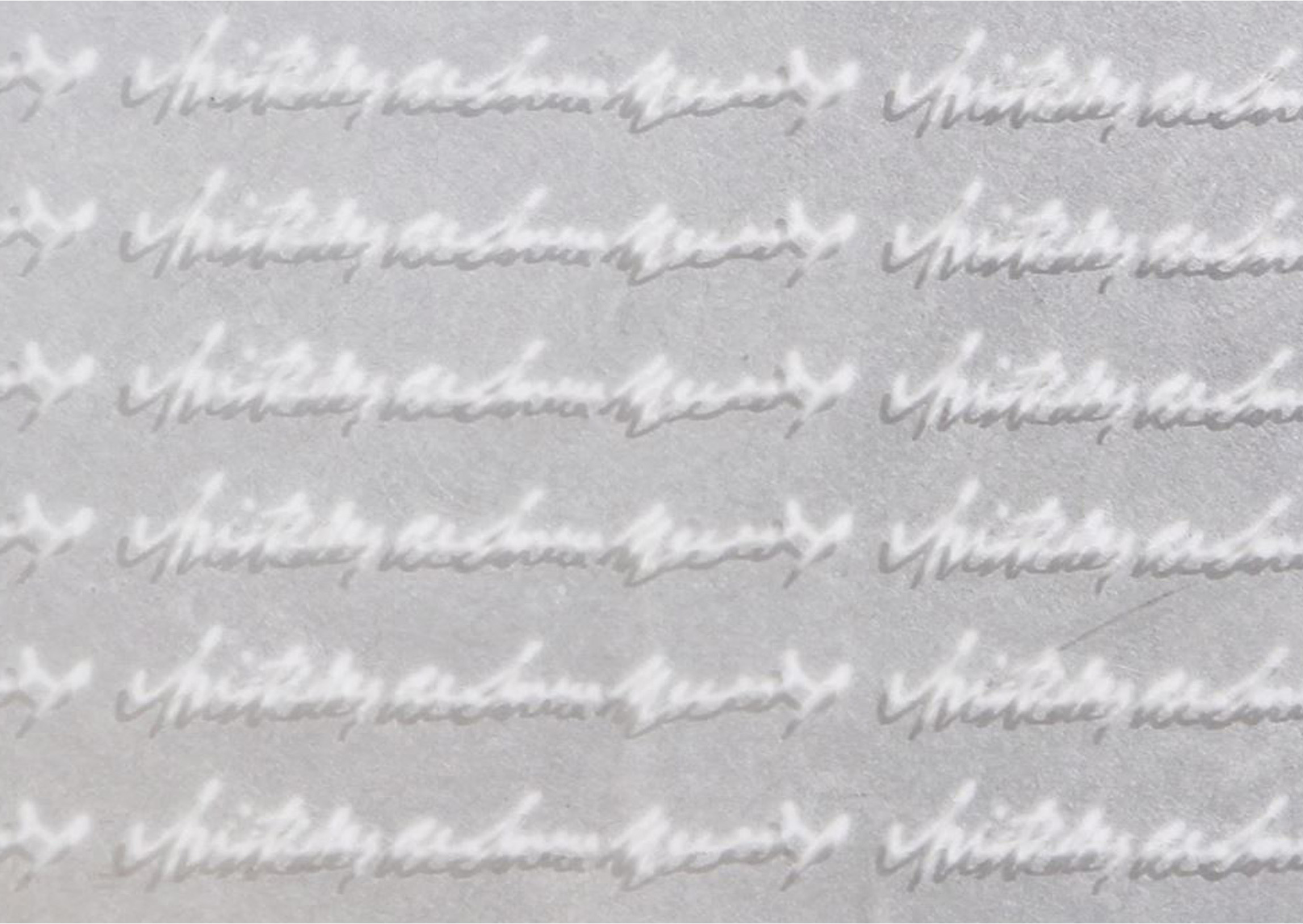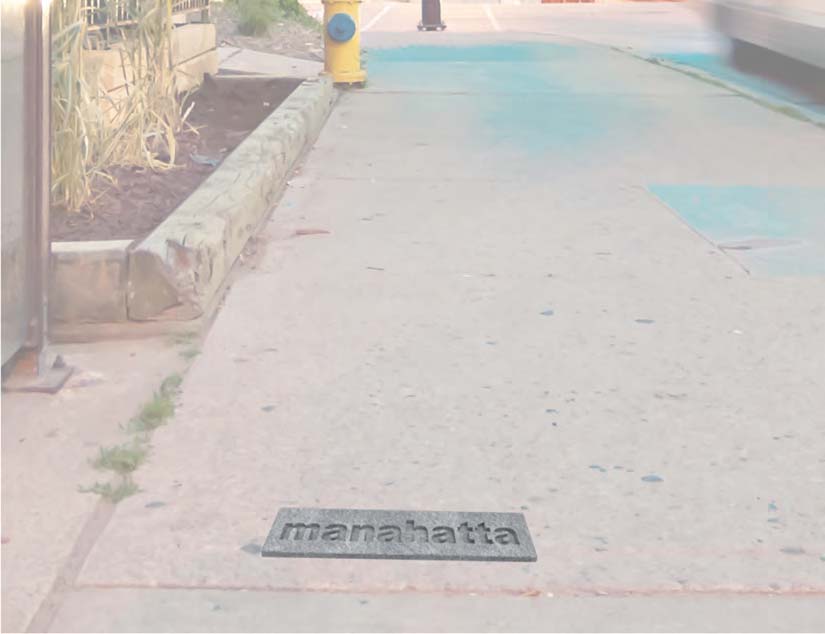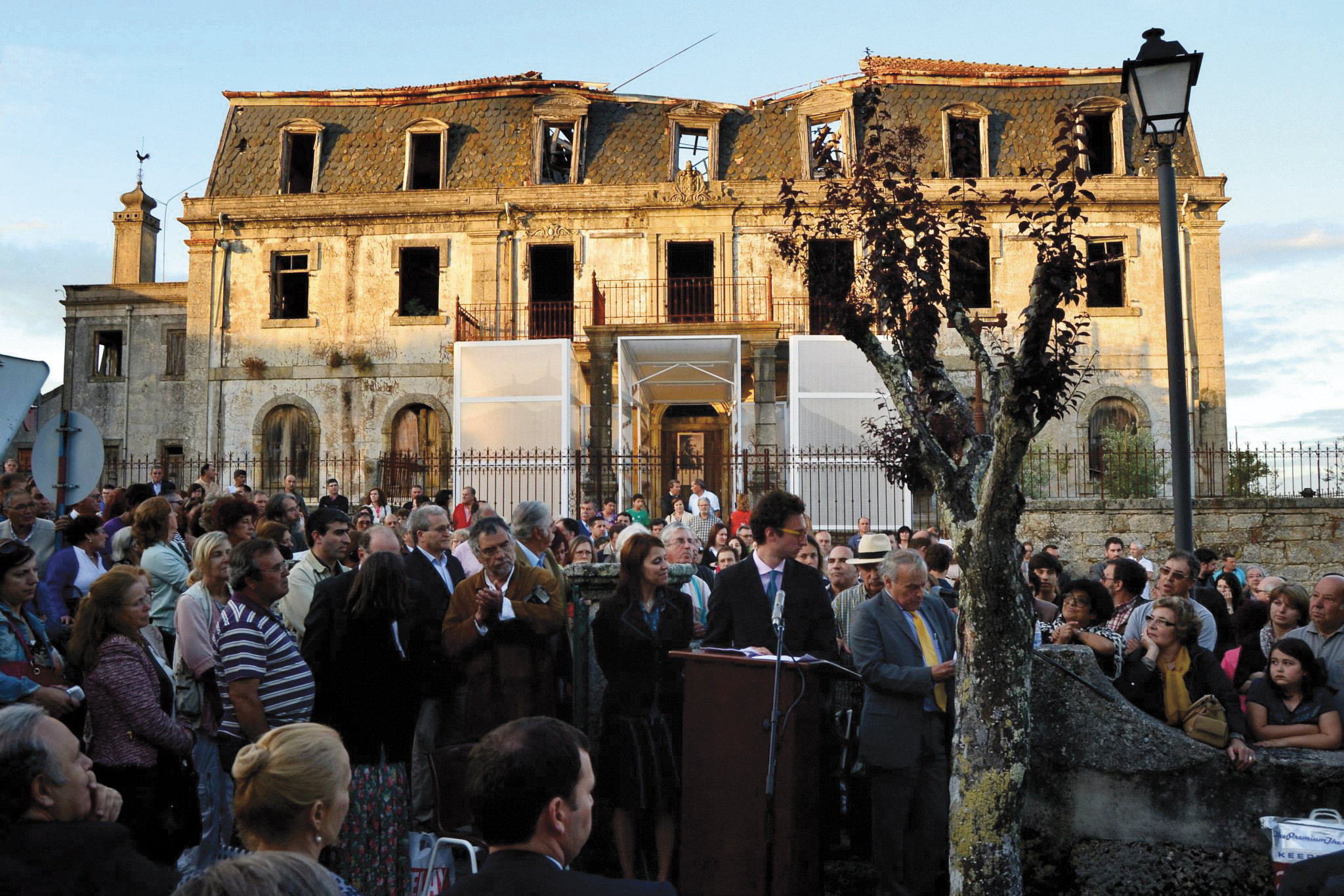Thirty-thousand etchings of a signature cover the walls of a series of translucent pavilions, each impression a mark of insistence on the humanity of an individual. The replicated signature belongs to Portuguese diplomat Aristides de Sousa Mendes, who during World War II defied his government to authenticate some 30,000 visas, saving the lives of scores of people seeking refuge from the Nazis, and paid a harsh price for his actions during his lifetime. Eric Moed, BArch ’12, visiting assistant professor of undergraduate architecture, designed this monument, which was installed outside Sousa Mendes’s home in Portugal, based upon his thesis at Pratt. For Moed, remembering stories like that of Sousa Mendes and the individuals and families who stood on the brink of precarity and survived as a result of his humanitarian acts—families including Moed’s—is a critical part of creating a just future.


Since that project, Moed has gone on to make memory a focal point of his work. He designed a traveling memorial that would collect and contextualize Civil War monuments, and ultimately expose them to decomposition, with a team of classmates at Harvard Graduate School of Design, where he earned his master’s in design studies with a concentration in art, design, and public domain. His master’s degree project was an educational workshop in the form of a memory game designed to generate discussion around monuments and memorials, with a particular aim to engage the public in those conversations. In Jacksonville, Florida, Moed and collaborators Caila Moed, his wife and a Jacksonville native, and Samuel Maddox worked with local Black cultural and historical institutions to create a public artwork and monument that functions as a bike rack as well as a directional tool, pointing toward sites of significance in Black history in the city. This past year, Moed was part of the Year 8 cohort of NEW INC, the New Museum’s cultural incubator, along with Penelope Phylactopoulos, with whom he cofounded oopsa – Office of Open Practice Studio/Agency, a transdisciplinary creative studio/agency. The two worked in NEW INC’s Future Memory track alongside fellow artists, designers, scientists, and others focused on new modes of telling stories that shape culture.
Today, Moed also teaches the Pratt undergraduate architecture course Future Memory in the Public Sphere, an advanced seminar that takes a critical look at how memorialization plays out in public space. His students’ projects take spaces in New York City as their sites of inquiry—for example, interrogating existing monuments like those in Columbus Circle and Washington Square Park, looking at ways to honor women’s skateboarding in Astor Place, and amplifying the indigenous roots of the island of Manhattan and the Brooklyn neighborhood of Brownsville. Their work probes the histories of spaces and monuments to imagine new, more inclusive, nuanced, and expansive ways of telling the stories that shape our society, asking, what will the future look like for memory?
Highlights from Future Memory in the Public Sphere
Selections of student work from the spring 2022 semester of Eric Moed’s Undergraduate Architecture studio.
Roman Mamus, BArch ’23
In Roman Mamus’s project, a monument placed in proximity to the Washington Arch in New York’s Washington Square Park shines light on a tragic moment in the site’s and city’s history, when Rose Butler, a 19-year-old enslaved person, was executed in 1818. “Instead of remembering this history, a monument to George Washington, a slave owner, stands as the centerpiece of the park,” reports Mamus in the presentation for Excavating the Past. “The proposed intervention highlights the absence of this history, by mirroring the outline of the arch itself at the opposing south side of the park. A gate, formally recalling a cemetery gate but more symbolically representing the deliberate obfuscation of this history, forces visitors to walk through the outlines of the legs of the arch. . . . By leaving the original arch untouched, the arch—now an icon far beyond its association with George Washington—remains in dialogue with the new intervention, serving as a built reminder of the ease with which important history is often buried.”
Alan Weng, BArch ’23
An expansion of an existing memorial in Brownsville, Brooklyn, pays tribute to the history of the area’s Jewish and Black communities. The proposed design reimagines the site of the Brownsville War Memorial, a monument dedicated to the Jewish soldiers of Brownsville who lost their lives in World War I, to include a section honoring Black Americans who also perished in the war. In the presentation for Unanimity, Alan Weng explains: “This monument would celebrate the coalition between the two communities, featuring a central path that leads up to two panels that would have the names of those who were lost in the war, Jewish on one panel and African American on the other, with the existing emblem embedded between the two in the center of the ground.” A fountain at the edge of the space represents unification and how the two communities are “forever intertwined in time and history.”
Siyue You, BArch ’23
Siyue You’s proposal for a temporary, interactive intervention around the Columbus Circle monument in Manhattan, conceived for installation in the days around Indigenous Peoples’ Day, uses colors evocative of the American flag to examine colonial and Indigenous history. In the concept, visitors moving through the space would activate a pressure-sensitive material initially colored indigo—representing the ocean upon which Columbus sailed and freedom—to reveal red beneath, representing the bloodshed of Indigeous peoples, with placard texts recasting the language on the existing monument through an Indigenous lens.

Ivy Jiahui Yu, BArch ’23
Ivy Jiahui Yu’s proposal for a monument that takes the entire island of Manhattan as its site remembers the Lenape name for the place and its transition to the present-day spelling. The monument would consist of stones situated in sidewalks running the length of the island, along the route of the Lenape trail that would define today’s Broadway. The spelling of the word on the stones would change gradually along the path, running from Peter Minuit Plaza north to Inwood Hill Park. Yu explains in the project presentation: “the changing of the words retrieves and recovers the beginning of the story—when this island was still called Manahatta.”
Read more stories from “Start Here” in the Fall 2022 issue.
